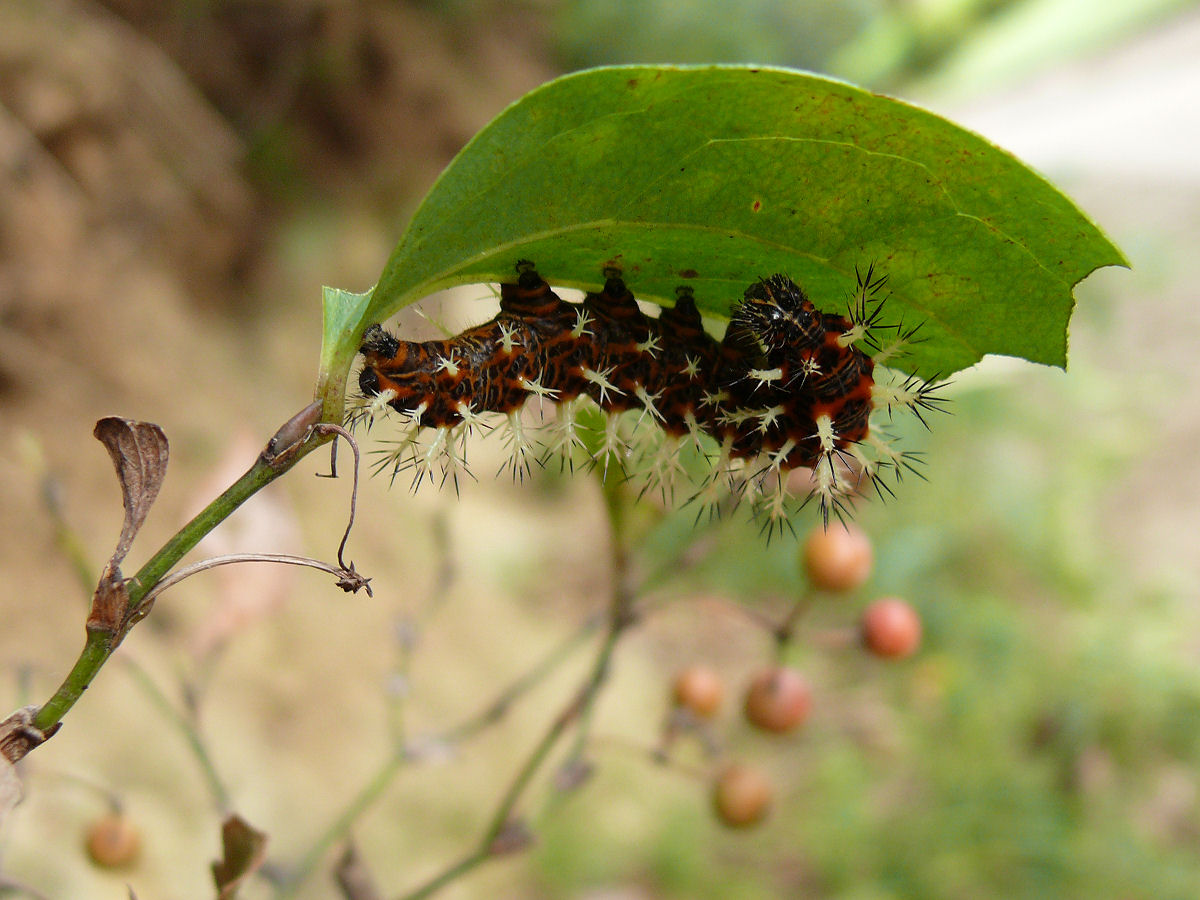|
Smilax Officinalis
''Smilax officinalis'' is a species of flowering plant in the family Smilacaceae, native to southern Central America and northwest South America; Honduras, Nicaragua, Costa Rica, Panama, Colombia, and Ecuador. A vine reaching as it climbs trees into the canopy, its roots are collected and used to make traditional medicines and, like other ''Smilax'' species, the soft drink sarsaparilla Sarsaparilla often refers to the sarsaparilla soft drink, made from Smilax plants. Sarsaparilla may also refer to: Biology *Several species of plants, of the genus ''Smilax'', including: **''Smilax ornata'', also known as Honduran or Jamaican sar .... References Smilacaceae Flora of Honduras Flora of Nicaragua Flora of Costa Rica Flora of Panama Flora of Colombia Flora of Ecuador Plants described in 1816 {{Liliales-stub ... [...More Info...] [...Related Items...] OR: [Wikipedia] [Google] [Baidu] |
Carl Sigismund Kunth
Carl Sigismund Kunth (18 June 1788 – 22 March 1850), also Karl Sigismund Kunth or anglicized as Charles Sigismund Kunth, was a German botanist. He is known for being one of the first to study and categorise plants from the Americas, American continents, publishing ''Nova genera et species plantarum quas in peregrinatione ad plagam aequinoctialem orbis novi collegerunt Bonpland et Humboldt'' (7 vols., Paris, 1815–1825). Born in Leipzig, Kunth became a merchant's clerk in Berlin in 1806. After meeting Alexander von Humboldt, who helped him attend lectures at the University of Berlin, Kunth became interested in botany. Kunth worked as Humboldt's assistant in Paris from 1813 to 1819. He classified plants that had been collected by Humboldt and Aimé Bonpland during their journey through the Americas. When Kunth returned to Berlin in 1820, he became Professor of Botany at the University of Berlin, as well as the Vice President of the Berlin botanical garden. In 1829, he was ele ... [...More Info...] [...Related Items...] OR: [Wikipedia] [Google] [Baidu] |
Smilacaceae
Smilacaceae, the greenbriers, is a family of flowering plants. While they were often assigned to a more broadly defined family Liliaceae, most recent botanists have accepted the two as distinct families, diverging around 55 million years ago during the Early Paleogene. One characteristic that distinguishes Smilacaceae from most of the other members of the Liliaceae-like Liliales is that it has true vessels in its conducting tissue. Another is that the veins of the leaves, between major veins, are reticulate (net-shaped), rather than parallel as in most monocots. Taxonomy The APG II system, of 2003 (unchanged from the APG system, of 1998), recognizes this family and places it in the order Liliales, in the clade monocots. Earlier it was a family of two genera, ''Heterosmilax'' and ''Smilax'', but DNA studies have shown that ''Heterosmilax'' has arisen from ''Smilax'' and the two genera are now merged. This results in Smilax being the only genus in Smilacaceae with about 210 know ... [...More Info...] [...Related Items...] OR: [Wikipedia] [Google] [Baidu] |
Smilax
''Smilax'' is a genus of about 300–350 species, found in the tropics and subtropics worldwide. In China for example about 80 are found (39 of which are endemic), while there are 20 in North America north of Mexico. They are climbing flowering plants, many of which are woody and/or thorny, in the monocotyledon family Smilacaceae, native throughout the tropical and subtropical regions of the world. Common names include ''catbriers'', ''greenbriers'', ''prickly-ivys'' and ''smilaxes''. ''Sarsaparilla'' (also zarzaparrilla, sarsparilla) is a name used specifically for the Jamaican '' S. ornata'' as well as a catch-all term in particular for American species. Occasionally, the non-woody species such as the smooth herbaceous greenbrier (''S. herbacea'') are separated as genus ''Nemexia''; they are commonly known by the rather ambiguous name ''carrion flowers''. Greenbriers get their scientific name from the Greek myth of Crocus and the nymph Smilax. Though this myth has numerous ... [...More Info...] [...Related Items...] OR: [Wikipedia] [Google] [Baidu] |
Sarsaparilla (soft Drink)
Sarsaparilla (, ) is a soft drink originally made from the vine ''Smilax ornata'' (also called 'sarsaparilla') or other species of ''Smilax'' such as '' Smilax officinalis''. In most Southeast Asian countries, it is known by the common name sarsi, and the trademarks Sarsi and Sarsae. It is similar in flavour to root beer. In the US, sarsaparilla is traditionally made with birch oil rather than the tropical plant. Etymology ''Smilax ornata'', a perennial trailing vine with prickly stems that is native to Mexico and Central America, is often used as the basis for the soft drink sarsaparilla. Common names include sarsaparilla, Honduran sarsaparilla, and Jamaican sarsaparilla. It is known in Spanish as ', which is derived from the words ' meaning "bramble" (from preroman ''sarza''), and ', meaning "little grape vine". History Sarsaparilla was popular in the United States in the 19th century. According to advertisements for patent medicines of the period, it was considered to be a r ... [...More Info...] [...Related Items...] OR: [Wikipedia] [Google] [Baidu] |
Flora Of Honduras
The flora and fauna of Honduras reflects the country's geographical location inside the tropics. This has allowed for diverse species of plants and animals to be adapted, but some of them are now in danger of extinction. This has posed the Honduran government, offices and nature organizations to look after the protection of the local environment, like the creation of nature reserves. Flora The flora of Honduras is varied. Pluvioselva, classified a tropical rain forest, is one of its most impressive vegetal populations. Ecologists designated it "Hygrophilous Megatherm Type", for corresponding to regions of high humidity and constant high temperatures, with a single dominant species, like pines or firs, covering big areas. The eastern part of the country, '' La Mosquitia'', has many creeper and climbing plants, such as lianas. There is a great variety of epiphytes, most strikingly the orchids. Adapted to the humid environment, trees are enormous and do not possess deep roots, but ... [...More Info...] [...Related Items...] OR: [Wikipedia] [Google] [Baidu] |
Flora Of Nicaragua
Flora is all the plant life present in a particular region or time, generally the naturally occurring (indigenous) native plants. Sometimes bacteria and fungi are also referred to as flora, as in the terms '' gut flora'' or '' skin flora''. Etymology The word "flora" comes from the Latin name of Flora, the goddess of plants, flowers, and fertility in Roman mythology. The technical term "flora" is then derived from a metonymy of this goddess at the end of the sixteenth century. It was first used in poetry to denote the natural vegetation of an area, but soon also assumed the meaning of a work cataloguing such vegetation. Moreover, "Flora" was used to refer to the flowers of an artificial garden in the seventeenth century. The distinction between vegetation (the general appearance of a community) and flora (the taxonomic composition of a community) was first made by Jules Thurmann (1849). Prior to this, the two terms were used indiscriminately.Thurmann, J. (1849). ''Essai de P ... [...More Info...] [...Related Items...] OR: [Wikipedia] [Google] [Baidu] |
Flora Of Costa Rica
Costa Rica (, ; ; literally "Rich Coast"), officially the Republic of Costa Rica ( es, República de Costa Rica), is a country in the Central American region of North America, bordered by Nicaragua to the north, the Caribbean Sea to the northeast, Panama to the southeast, the Pacific Ocean to the southwest, and maritime border with Ecuador to the south of Cocos Island. It has a population of around five million in a land area of . An estimated 333,980 people live in the capital and largest city, San José, with around two million people in the surrounding metropolitan area. The sovereign state is a unitary presidential constitutional republic. It has a long-standing and stable democracy and a highly educated workforce. The country spends roughly 6.9% of its budget (2016) on education, compared to a global average of 4.4%. Its economy, once heavily dependent on agriculture, has diversified to include sectors such as finance, corporate services for foreign companies, pharma ... [...More Info...] [...Related Items...] OR: [Wikipedia] [Google] [Baidu] |
Flora Of Panama
Panama is a country located in Central America, bordering both the Caribbean Sea and the Pacific Ocean, between Colombia and Costa Rica. Panama is located on the narrow and low Isthmus of Panama. This S-shaped isthmus is situated between 7° and 10° north latitude and 77° and 83° west longitude. Panama encompasses approximately . It is long, and between wide. Geology The geology of Panama is extremely complicated. The land was formed by interactions of several tectonic plates over the past 10 million years. Elevation The dominant feature of Panama's landform is the central spine of mountains and hills that forms the continental divide. The divide does not form part of the great mountain chains of North America, and only near the Colombian border are there highlands related to the Andes, Andean system of South America. The spine that forms the divide is the highly eroded arch of an uplift from the sea bottom, in which peaks were formed by volcanic intrusions. The we ... [...More Info...] [...Related Items...] OR: [Wikipedia] [Google] [Baidu] |
Flora Of Colombia
The Flora of Colombia is characterized by over 28,000 species of green plants. National Flower of Colombia The national flower of Colombia is the orchid ''Cattleya trianae'' which was named after the Colombian naturalist José Jerónimo Triana. The orchid was selected by botanist Emilio Robledo, in representation of the Colombian Academy of History to determine the most representative flowering plant of Colombia. He described it as one of the most beautiful flowers in the world and selected ''Cattleya trianae'' as National symbol. National Tree of Colombia The national tree of Colombia is the palm ''Ceroxylon quindiuense'' (Quindío wax palm) which was named after the Colombian Department of Quindío where is located the Cocora valley, the only habitat of this restricted range species. The Quindío wax palm was selected as the national tree by the government of Belisario Betancur and was the first tree officially declared as a protected species in Colombia. ''C.quindiuens ... [...More Info...] [...Related Items...] OR: [Wikipedia] [Google] [Baidu] |
Flora Of Ecuador
Flora is all the plant life present in a particular region or time, generally the naturally occurring (indigenous) native plants. Sometimes bacteria and fungi are also referred to as flora, as in the terms '' gut flora'' or '' skin flora''. Etymology The word "flora" comes from the Latin name of Flora, the goddess of plants, flowers, and fertility in Roman mythology. The technical term "flora" is then derived from a metonymy of this goddess at the end of the sixteenth century. It was first used in poetry to denote the natural vegetation of an area, but soon also assumed the meaning of a work cataloguing such vegetation. Moreover, "Flora" was used to refer to the flowers of an artificial garden in the seventeenth century. The distinction between vegetation (the general appearance of a community) and flora (the taxonomic composition of a community) was first made by Jules Thurmann (1849). Prior to this, the two terms were used indiscriminately.Thurmann, J. (1849). ''Essai de ... [...More Info...] [...Related Items...] OR: [Wikipedia] [Google] [Baidu] |




